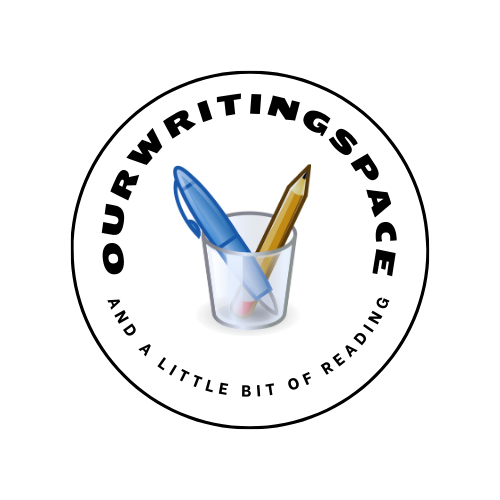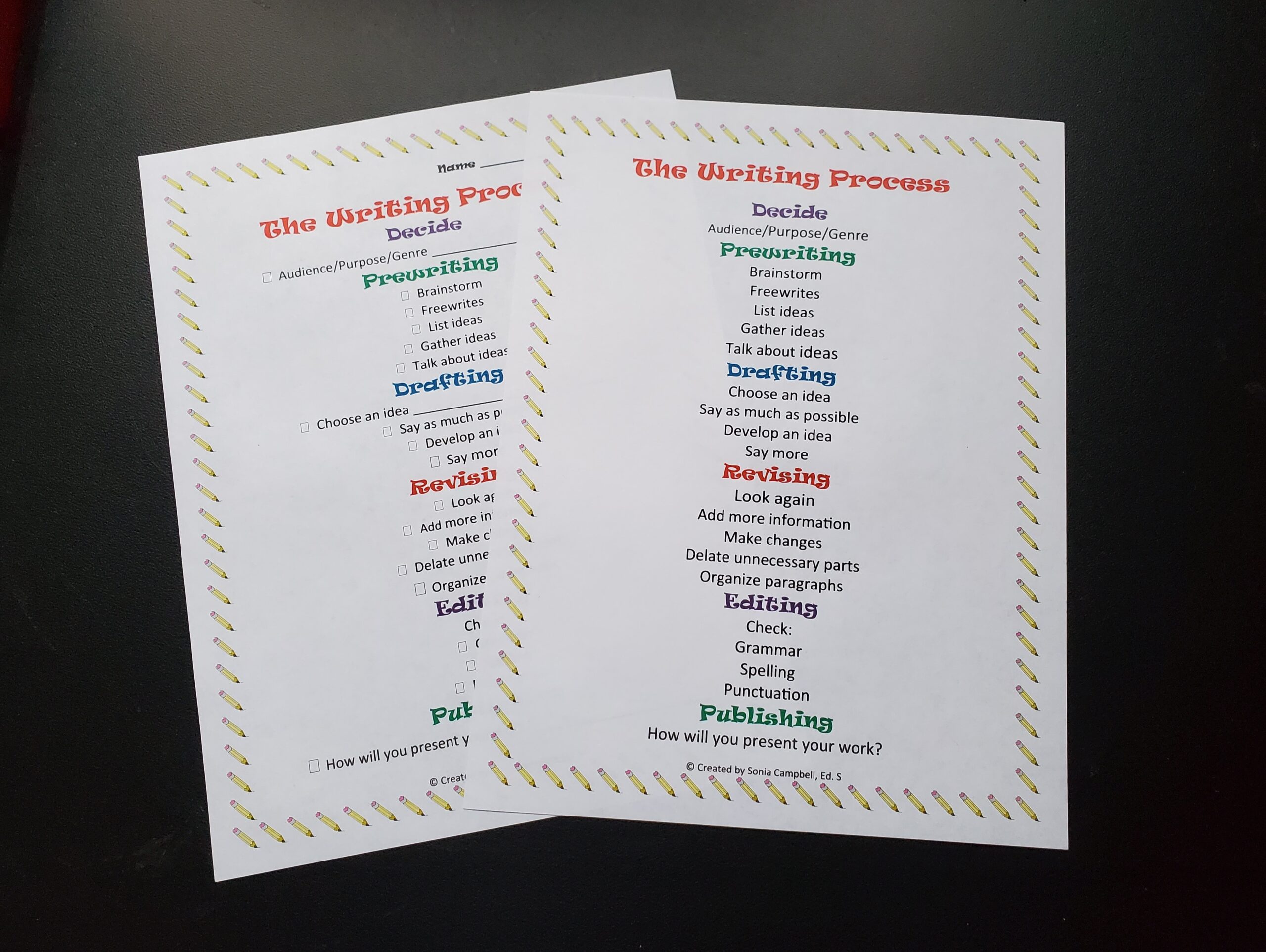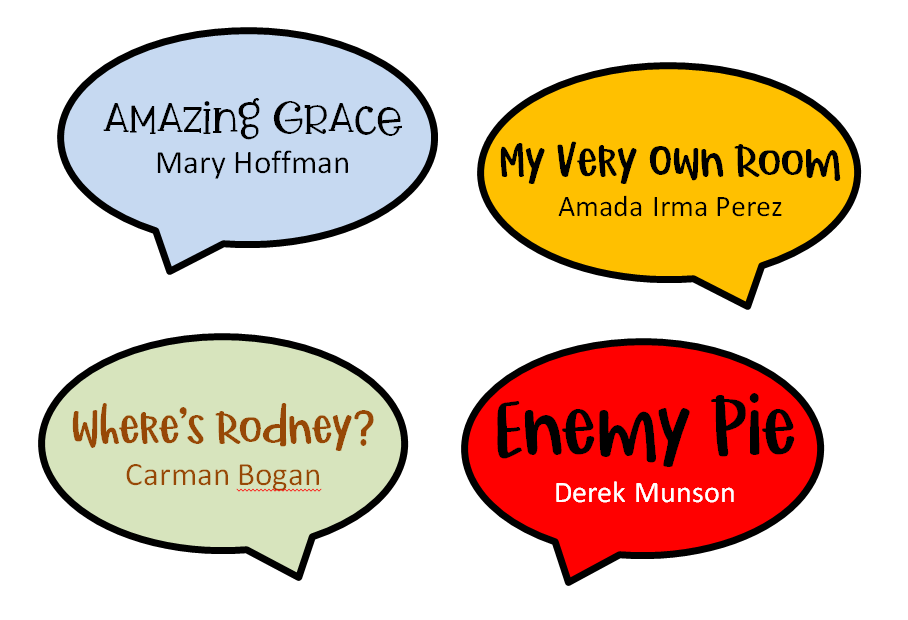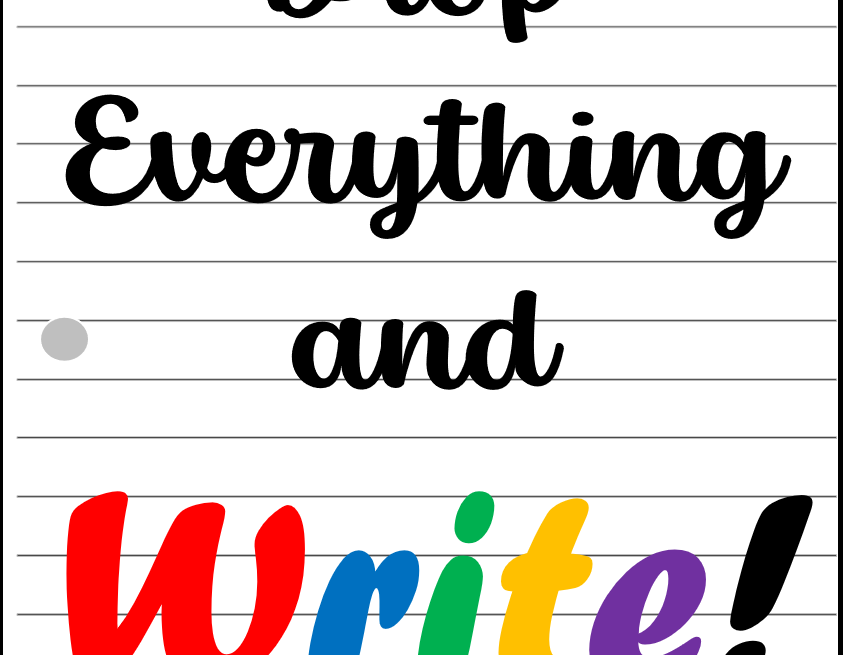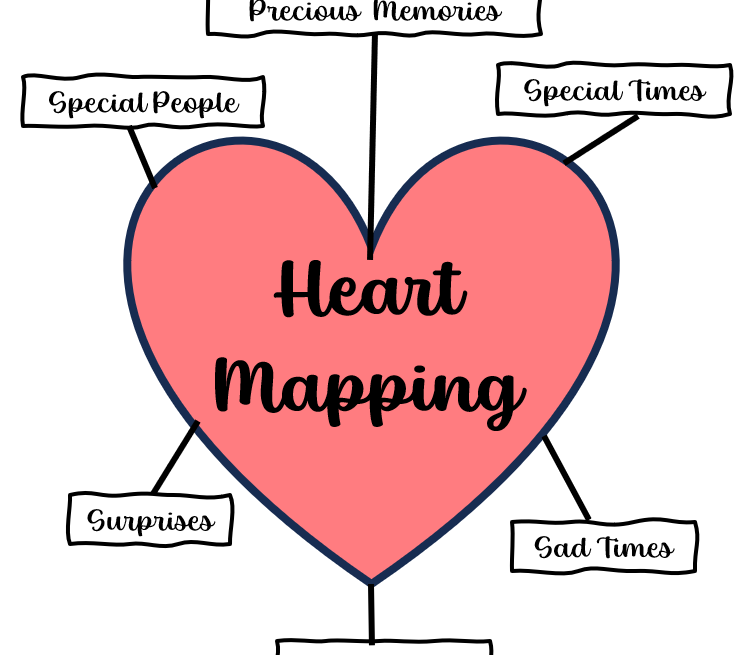I have found that it is helpful to introduce the writing process to students at the start of the school year and/or before we jump into focused writing. When I do this it helps the students become familiar with the writing process vocabulary, see the big picture of how we will approach writing, and understand the writing process is a guide to help us tackle our writing.
Here is a brief overview of how I interpret the writing process steps and how I share them with my students. The steps are prewriting, drafting, revising, editing, and publishing.
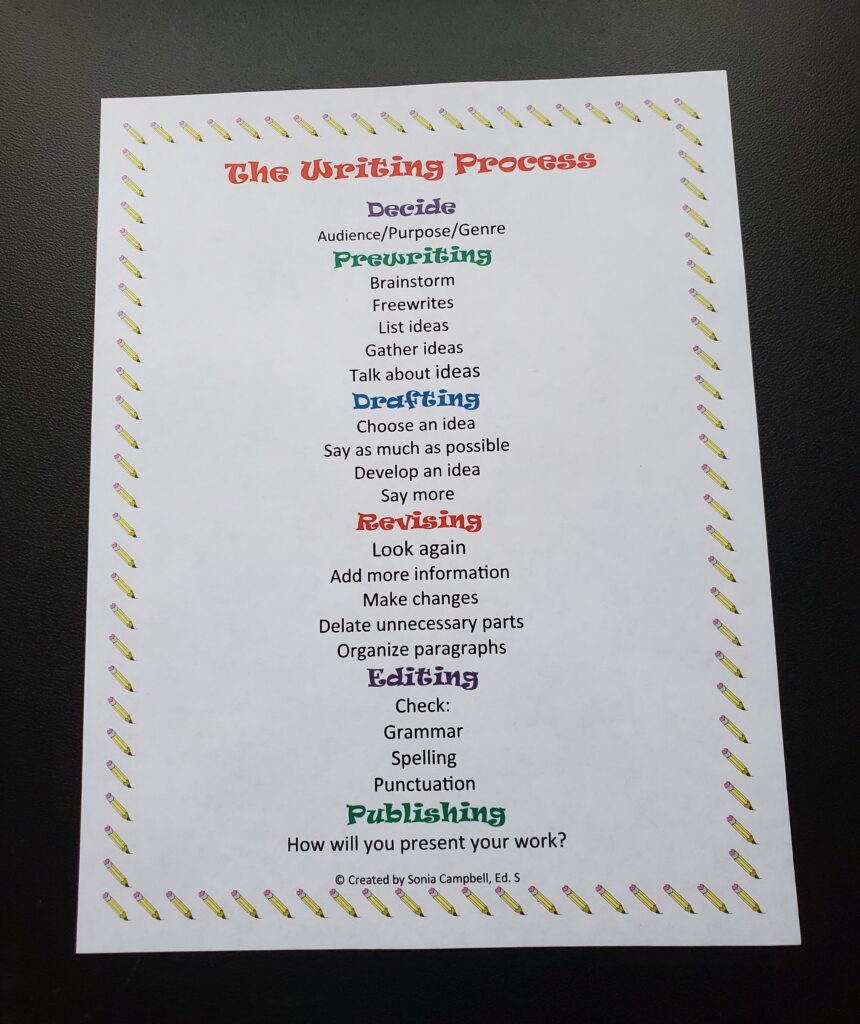
Prewriting
Before students can begin writing they need to have something to write about. This step is intended to help them find an interesting topic through brainstorming, freewriting, generating ideas, listing ideas, talking to others, etc. Students are more likely to take ownership of their writing when they have chosen their own topics.
Drafting
Once an idea has been chosen, I suggest that the first draft be written in their writer’s notebooks. I remind my students that a writer’s notebook is a place to hold their thinking. The first draft will not be and should not be perfect. It will be a skeleton of an idea that needs to be developed. At this stage, students should aim to have a beginning, middle and end to their writing as this will make a peer conference much more productive. Once the writer has a draft it is time to get feedback from a listener/reader. This is a peer conference time. Students may meet as often as they need to, but the meetings should not take over their writing time, and the meeting must help the writer. If this is not carefully structured students will see this as a time to socialize. I suggest that they meet a maximum of ten minutes and then return to their writing spot. The teacher will also be involved in teacher/student conferences.
Revising
This is the step that students enjoy the least because it requires them going back and taking a very close look at the work they have done so far. Often young writers think that writing is done in one take and they want to jump to publishing. Before publishing, they need to ask themselves some revising questions. For example, Did I write about one idea? Do I need to move sentences/paragraphs around? Do I need to add more details? Do I need to delete parts? Does my writing make sense as a whole? If they have had peer or teacher conferences, they should have a few ideas as to how they can move forward in their writing.
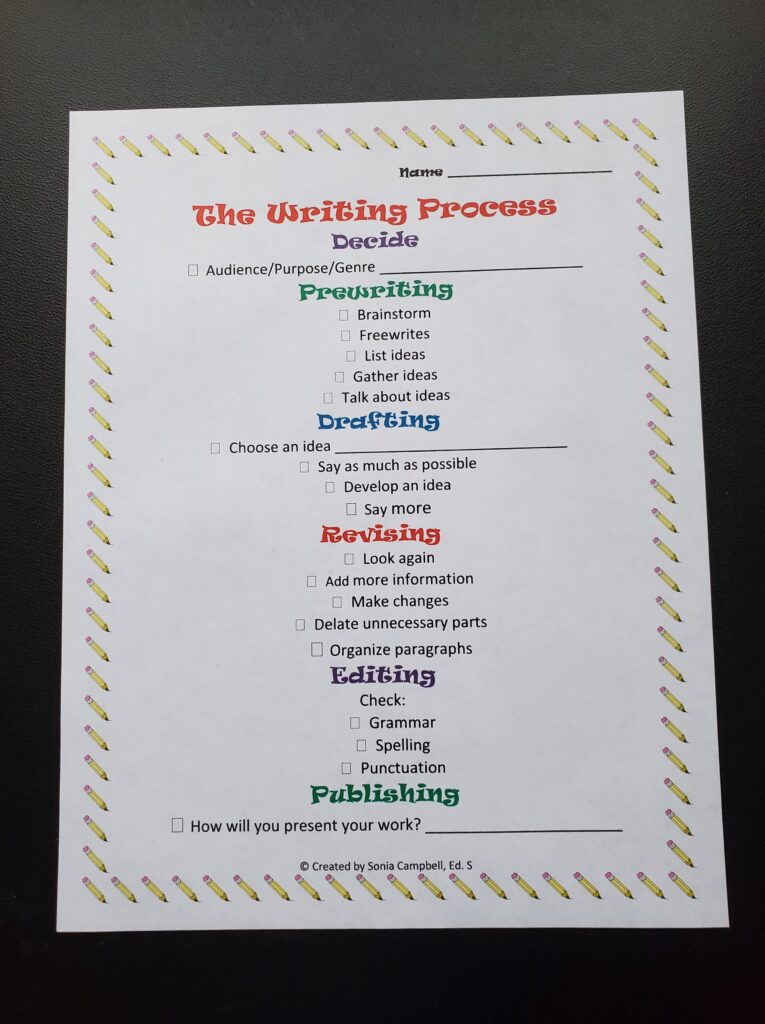
Editing
This is the time for students to focus on checking grammar, punctuation, and spelling. Students can work on their own or with a partner to check their work. For an effective peer conference, you need to give clear guidelines and model expectations. An editing checklist will help to guide conferences and students working independently.
Publishing
For the final step students will publish their writing in an appropriate format. The format will depend on the genre.
Finally, keep in mind that the writing process steps can involve revisiting some steps more than once. As students work through the process, they will see that there are times when they want to revisit a step to make their writing stronger. For example, while students are editing, they might recognize that there is something that they want to go back and revise. This is a normal part of being a writer and I think it shows that the student is placing value on clearly communicating their writing idea.
Keep it going!
Once you have shared the writing process steps with the students be sure to have them on display so your students can refer to them throughout the school year.
Happy Writing!
Sonia
P.S. Below are free downloads of a mini poster of The Writing Process and a Writing Process Checklist that can be used in your classroom. Students can check off and fiil in the blanks on the checklist to help them stay focused and on target as they write.
